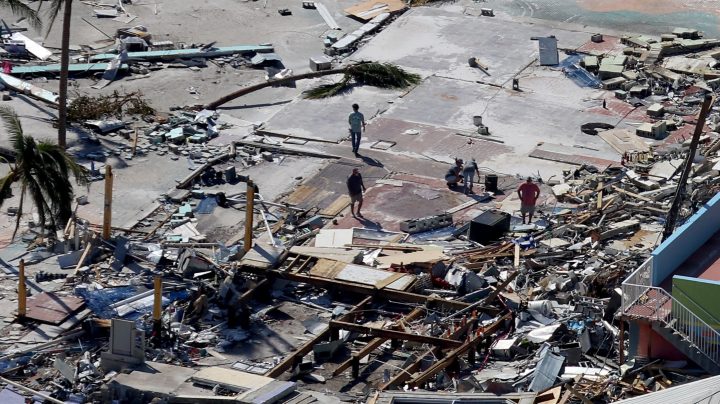
Ian’s catastrophic damage in Florida falls on an insurance market in turmoil
Ian’s catastrophic damage in Florida falls on an insurance market in turmoil

Hurricane Ian (now downgraded to a tropical storm) has left a path of destruction in Florida that Gov. Ron DeSantis called “historic.” The human toll is still unclear as rescuers struggle to reach residents trapped by catastrophic flooding. But the physical damage is coming into focus: at least two bridges have been destroyed, winds have ripped roofs off buildings, a 10-foot storm surge sent cars and boats smashing into houses, and heavy rain has submerged whole cities. It’s projected to be one of the costliest storms in U.S. history. And it’s sure be a strain on the state’s already fragile insurance industry.
When natural disasters destroy communities, people usually turn to insurance companies.
Mark Friedlander with the Insurance Information Institute said this disaster could cause upward of $30 billion in property losses.
“Companies are collapsing … virtually every company in Florida that writes home insurance is losing money,” Friedlander said.
About a dozen insurers in the state have folded since 2020, and dozens more are in financial trouble, according to state regulators. That’s driven up prices for Florida homeowners, who pay the highest rates in the country.
“We are getting to a point where Florida homeowners will no longer be able to afford the insurance,” Friedlander said. And some homeowners can’t get private insurance at all.
Many large insurance companies have left the state, said Martin Grace, a business professor at Temple University who owns a house in Florida.
He said as private insurance has become pricier and less available, more consumers have turned to Florida’s state-run insurer called Citizens.
“It is the largest insurer of homeowners in the state,” Grace said. “And that means the taxpayers are on the hook.”
Florida has some unique regulatory issues, but other states facing increasing risks from climate disasters, like Louisiana and California, have also seen private insurance markets falter, said Carolyn Kousky at the Environmental Defense Fund.
“We’re seeing a shift of disaster risk from the private sector into the public sector,” she said.
Kousky said the only way to manage that liability in the long term is to reduce the underlying risk by changing how and where we build.
There’s a lot happening in the world. Through it all, Marketplace is here for you.
You rely on Marketplace to break down the world’s events and tell you how it affects you in a fact-based, approachable way. We rely on your financial support to keep making that possible.
Your donation today powers the independent journalism that you rely on. For just $5/month, you can help sustain Marketplace so we can keep reporting on the things that matter to you.











